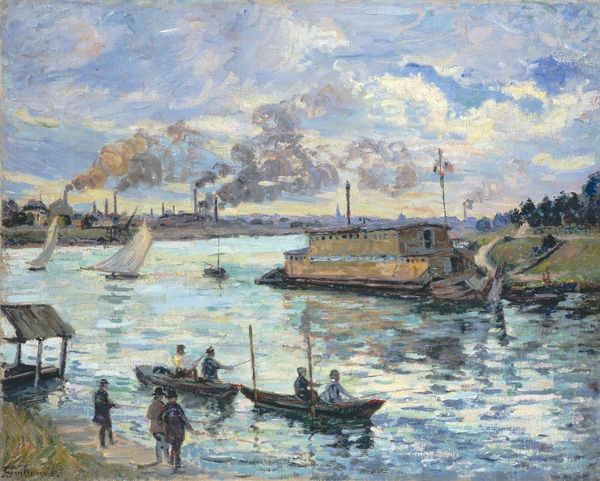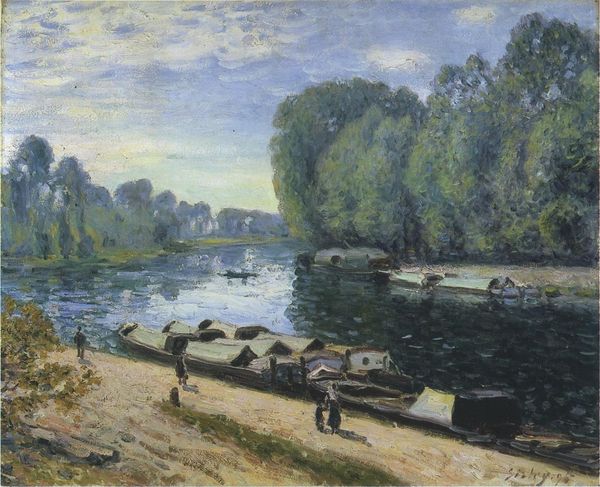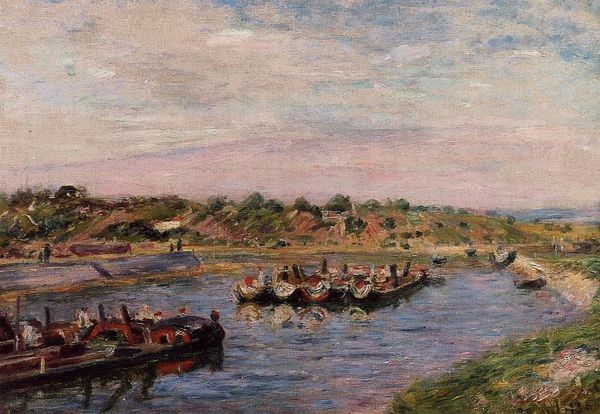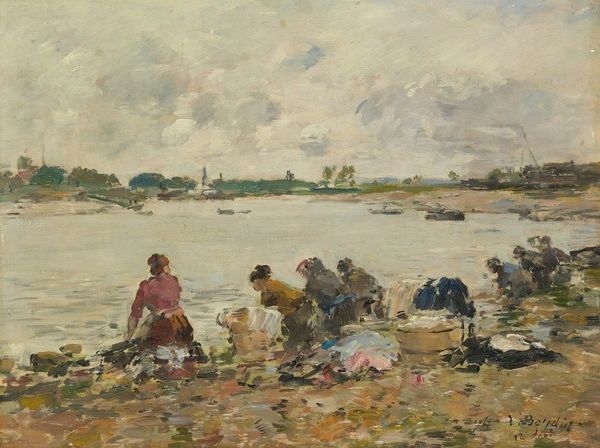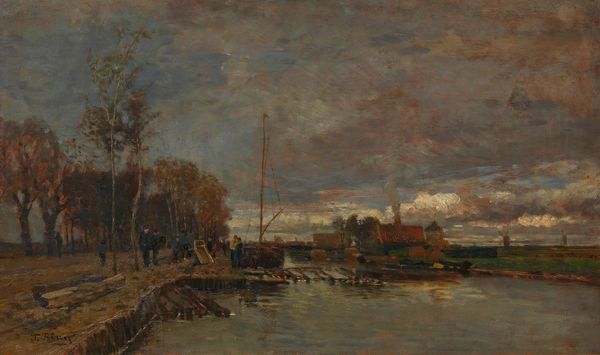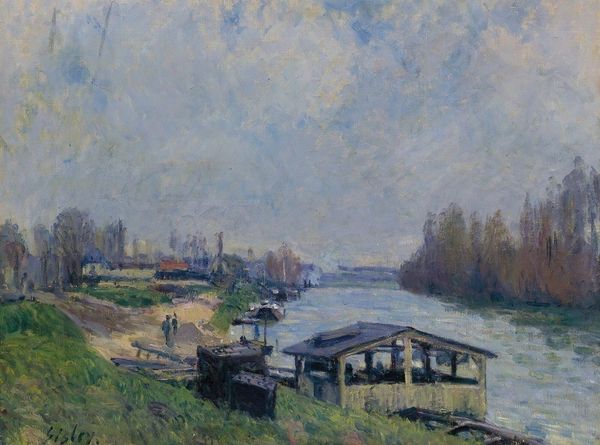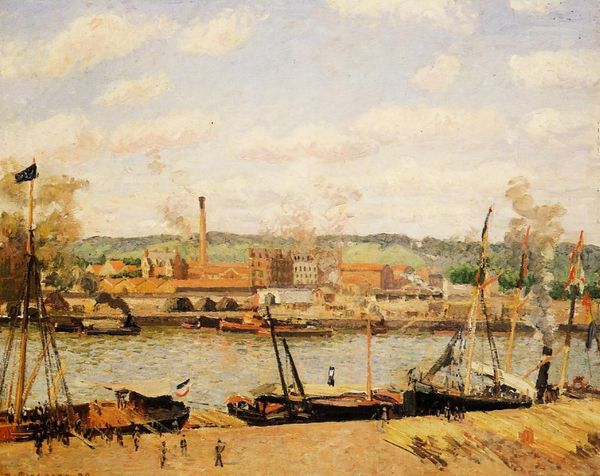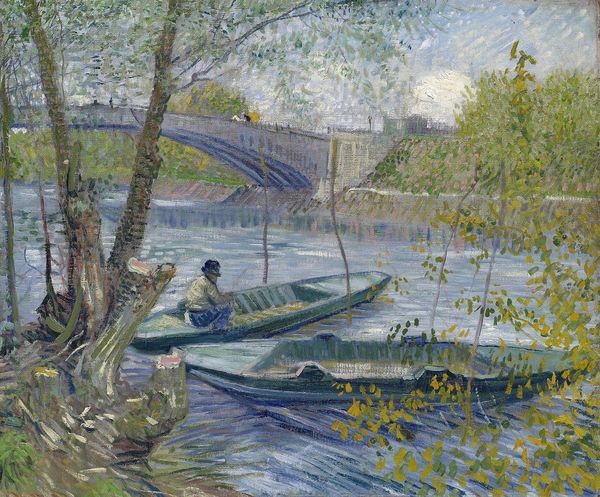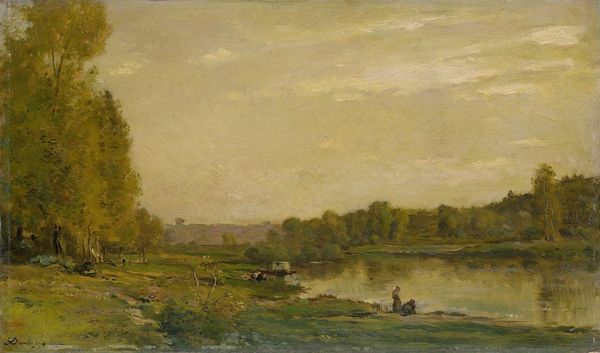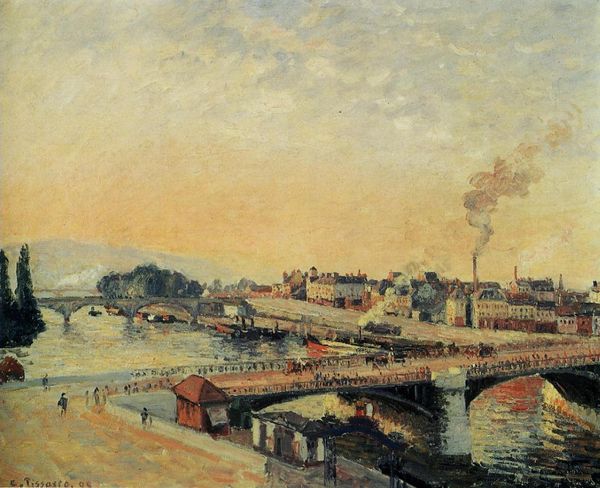
plein-air, oil-paint, impasto
#
impressionism
#
plein-air
#
oil-paint
#
landscape
#
impressionist landscape
#
oil painting
#
impasto
#
cityscape
#
watercolor
Copyright: Public Domain: Artvee
Curator: I'm immediately struck by the contrast here; the bridge, a symbol of connection and modernity, stands against these figures, toiling in a way that feels ancient. There’s a certain tension there that really holds my attention. Editor: Indeed. What you’re responding to is captured in Armand Guillaumin’s “Le Pont De Sully, Paris,” painted circa 1886. He worked in oil paint in the plein-air style. It's a captivating view of working-class life juxtaposed with Parisian architecture. Curator: The light is particularly fascinating. It’s diffused, almost melancholic, casting a pale glow that softens the harshness of the labor. I find the river and bridge motifs are heavily symbolic of the passage of time and inevitable change. Editor: It's interesting to consider how Guillaumin might have viewed the city's rapid transformation through this painting. Bridges themselves can symbolize not just physical connection but also social progress. What does it mean, then, that he depicts this traditional labor alongside it? Curator: Perhaps the laborers represent resilience and the enduring human spirit. Their hard work builds and maintains the city, yet their place is often unseen. He seems interested in elevating their everyday lives through the dignity of his portrayal. It's a tribute of sorts. Editor: Precisely. Impressionism gave rise to seeing those laborers’ work as equally viable to depicting high society. It changed the lens and scope of art history for good. Curator: There is a clear sense of solidarity, but there’s also an element of visual commentary at play; by framing them within this grander vista, is the artist prompting us to question our own roles within the ever-evolving cityscape? Editor: Very likely! And this also makes me consider the shift in public attitudes towards urban development during this time, that he wanted to capture. Did the working class always benefit from such progress? And if so, at what cost? These are very urgent social questions to tackle, visually or otherwise. Curator: I am left wondering about how perceptions of “progress” evolved – something very relevant today. Guillaumin captures a transitional moment. Thank you. Editor: And thanks to you. By weaving personal narratives into a broader social framework, we give this snapshot real weight.
Comments
No comments
Be the first to comment and join the conversation on the ultimate creative platform.

